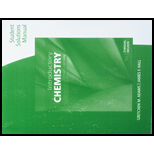
Student Solutions Manual for Zumdahl/DeCoste's Introductory Chemistry: A Foundation, 9th
9th Edition
ISBN: 9781337399470
Author: ZUMDAHL, Steven S.; DeCoste, Donald J.
Publisher: Cengage Learning
expand_more
expand_more
format_list_bulleted
Concept explainers
Question
Chapter 13, Problem 38QAP
Interpretation Introduction
Interpretation:
Final volume of gas should be determined.
Concept Introduction:
Charles’s law: It is also known as temperature volume relationship. It states that volume of given mass of gas is directly proportional to its temperature.
Expert Solution & Answer
Want to see the full answer?
Check out a sample textbook solution
Students have asked these similar questions
Draw the product of the reaction shown below.
Ignore inorganic byproducts.
cat. H2SO4
HNO3 (1 equiv)
Drawing
Q
Provide the correct systematic name for the compound shown here.
Using the appropriate bond energies, calculate the heat of reaction AH for the following reaction:
H-H + CI-CI
2 H-CI
You can find a table of bond energies by using the Data button on the ALEKS toolbar.
Round your answer to the nearest kJ/mol.
Note: For clarity, all lone pairs have been omitted from the molecular structures.
☐
kJ
mol
ค
000
Ar
B
Chapter 13 Solutions
Student Solutions Manual for Zumdahl/DeCoste's Introductory Chemistry: A Foundation, 9th
Ch. 13.1 - Prob. 13.1SCCh. 13.2 - Prob. 13.2SCCh. 13.3 - Prob. 1CTCh. 13.3 - trong>Exercise 13.3 A child blows a bubble that...Ch. 13.4 - Prob. 13.4SCCh. 13.5 - trong>Exercise 13.5 A weather balloon contains...Ch. 13.5 - Prob. 13.6SCCh. 13.5 - Prob. 13.7SCCh. 13.5 - trong>Exercise 13.8 A sample of argon gas with a...Ch. 13.6 - Prob. 13.9SC
Ch. 13.6 - Prob. 13.10SCCh. 13.8 - Prob. 1CTCh. 13.10 - trong>Exercise 13.11 Calculate the volume of...Ch. 13.10 - at if STP was defined as normal room temperature...Ch. 13.10 - Prob. 13.12SCCh. 13 - Prob. 1ALQCh. 13 - Prob. 2ALQCh. 13 - Prob. 3ALQCh. 13 - Prob. 4ALQCh. 13 - Prob. 5ALQCh. 13 - Prob. 6ALQCh. 13 - Prob. 7ALQCh. 13 - Prob. 8ALQCh. 13 - Prob. 9ALQCh. 13 - Prob. 10ALQCh. 13 - Prob. 11ALQCh. 13 - Prob. 12ALQCh. 13 - Prob. 13ALQCh. 13 - Draw molecular—level views than show the...Ch. 13 - Prob. 15ALQCh. 13 - Prob. 16ALQCh. 13 - Prob. 17ALQCh. 13 - Prob. 18ALQCh. 13 - Prob. 19ALQCh. 13 - Prob. 20ALQCh. 13 - You are holding two balloons of the same volume....Ch. 13 - Prob. 22ALQCh. 13 - Prob. 23ALQCh. 13 - The introduction to this chapter says that "we...Ch. 13 - Prob. 2QAPCh. 13 - Prob. 3QAPCh. 13 - Prob. 4QAPCh. 13 - Prob. 5QAPCh. 13 - Prob. 6QAPCh. 13 - Prob. 7QAPCh. 13 - Prob. 8QAPCh. 13 - Prob. 9QAPCh. 13 - Prob. 10QAPCh. 13 - Make the indicated pressure conversions....Ch. 13 - Prob. 12QAPCh. 13 - Prob. 13QAPCh. 13 - Prob. 14QAPCh. 13 - Prob. 15QAPCh. 13 - Prob. 16QAPCh. 13 - Prob. 17QAPCh. 13 - Prob. 18QAPCh. 13 - Prob. 19QAPCh. 13 - Prob. 20QAPCh. 13 - Prob. 21QAPCh. 13 - Prob. 22QAPCh. 13 - 3. A sample of helium gas with a volume of...Ch. 13 - Prob. 24QAPCh. 13 - Prob. 25QAPCh. 13 - Prob. 26QAPCh. 13 - Prob. 27QAPCh. 13 - Prob. 28QAPCh. 13 - A sample of gas in a balloon has an initial...Ch. 13 - Suppose a 375mLsample of neon gas at 78Cis cooled...Ch. 13 - For each of the following sets of...Ch. 13 - For each of the following sets of...Ch. 13 - Prob. 33QAPCh. 13 - Prob. 34QAPCh. 13 - Suppose 1.25Lof argon is cooled from 291Kto 78K....Ch. 13 - Suppose a 125mLsample of argon is cooled from...Ch. 13 - Prob. 37QAPCh. 13 - Prob. 38QAPCh. 13 - Prob. 39QAPCh. 13 - Prob. 40QAPCh. 13 - Prob. 41QAPCh. 13 - If :math>1.04gof chlorine gas occupies a volume of...Ch. 13 - If 3.25moles of argon gas occupies a volume of...Ch. 13 - Prob. 44QAPCh. 13 - Prob. 45QAPCh. 13 - Prob. 46QAPCh. 13 - Prob. 47QAPCh. 13 - Prob. 48QAPCh. 13 - Prob. 49QAPCh. 13 - Prob. 50QAPCh. 13 - Prob. 51QAPCh. 13 - Determine the pressure in a 125Ltank containing...Ch. 13 - Prob. 53QAPCh. 13 - Prob. 54QAPCh. 13 - Prob. 55QAPCh. 13 - Suppose that a 1.25gsample of neon gas is confined...Ch. 13 - At what temperature will a 1.0gsample of neon gas...Ch. 13 - Prob. 58QAPCh. 13 - What pressure exists in a 200Ltank containing...Ch. 13 - Prob. 60QAPCh. 13 - Suppose a 24.3mLsample of helium gas at 25Cand...Ch. 13 - Prob. 62QAPCh. 13 - Prob. 63QAPCh. 13 - Prob. 64QAPCh. 13 - Prob. 65QAPCh. 13 - Prob. 66QAPCh. 13 - Prob. 67QAPCh. 13 - Suppose than 1.28gof neon gas and 2.49gof argon...Ch. 13 - A tank contains a mixture of 52.5gof oxygen gas...Ch. 13 - What mass of new gas would but required to fill a...Ch. 13 - Prob. 71QAPCh. 13 - Prob. 72QAPCh. 13 - A 500mLsample of O2gas at 24Cwas prepared by...Ch. 13 - Prob. 74QAPCh. 13 - Prob. 75QAPCh. 13 - Prob. 76QAPCh. 13 - Prob. 77QAPCh. 13 - Prob. 78QAPCh. 13 - Prob. 79QAPCh. 13 - Prob. 80QAPCh. 13 - Prob. 81QAPCh. 13 - Prob. 82QAPCh. 13 - Prob. 83QAPCh. 13 - Prob. 84QAPCh. 13 - Calcium oxide can be used to “scrub" carbon...Ch. 13 - Consider the following reaction:...Ch. 13 - Consider the following reaction for the combustion...Ch. 13 - Although we: generally think of combustion...Ch. 13 - m>89. Ammonia and gaseous hydrogen chloride...Ch. 13 - Calcium carbide, CaC2, reacts with water to...Ch. 13 - Prob. 91QAPCh. 13 - Prob. 92QAPCh. 13 - What volume does a mixture of 14.2gof He and...Ch. 13 - Prob. 94QAPCh. 13 - Prob. 95QAPCh. 13 - Consider the following chemical equation:...Ch. 13 - Prob. 97QAPCh. 13 - Dinitrogen monoxide, N2O, reacts with propane,...Ch. 13 - Consider the following unbalanced chemical...Ch. 13 - Prob. 100QAPCh. 13 - Prob. 101QAPCh. 13 - Prob. 102QAPCh. 13 - Prob. 103APCh. 13 - Prob. 104APCh. 13 - Prob. 105APCh. 13 - onsider the flasks in the following diagrams. mg...Ch. 13 - Prob. 107APCh. 13 - helium tank contains 25.2Lof helium m 8.40atm...Ch. 13 - Prob. 109APCh. 13 - Prob. 110APCh. 13 - Prob. 111APCh. 13 - Prob. 112APCh. 13 - Prob. 113APCh. 13 - Prob. 114APCh. 13 - Prob. 115APCh. 13 - Prob. 116APCh. 13 - Prob. 117APCh. 13 - 2.50Lcontainer at 1.00atm and 48Cis filled with...Ch. 13 - Prob. 119APCh. 13 - Prob. 120APCh. 13 - Prob. 121APCh. 13 - Prob. 122APCh. 13 - Prob. 123APCh. 13 - f a gaseous mixture is made of 3.50gof He and...Ch. 13 - Prob. 125APCh. 13 - Prob. 126APCh. 13 - f 5.l2gof oxygen gas occupies a volume of 6.21Lat...Ch. 13 - Prob. 128APCh. 13 - Prob. 129APCh. 13 - Prob. 130APCh. 13 - Prob. 131APCh. 13 - Prob. 132APCh. 13 - t what temperature does 4.00gof helium gas have a...Ch. 13 - Prob. 134APCh. 13 - f 3.20gof nitrogen gas occupies a volume of...Ch. 13 - Prob. 136APCh. 13 - mixture at 33Ccontains H2at 325torr, N2at 475torr,...Ch. 13 - Prob. 138APCh. 13 - Prob. 139APCh. 13 - he following demonstration takes place in a...Ch. 13 - onsider the following unbalanced chemical...Ch. 13 - Prob. 142APCh. 13 - Prob. 143APCh. 13 - Prob. 144APCh. 13 - Prob. 145APCh. 13 - Prob. 146APCh. 13 - Prob. 147APCh. 13 - Prob. 148APCh. 13 - Prob. 149APCh. 13 - omplete the following table for an ideal gas. mg...Ch. 13 - Prob. 151CPCh. 13 - Prob. 152CPCh. 13 - certain flexible weather balloon contains helium...Ch. 13 - Prob. 154CPCh. 13 - Prob. 155CPCh. 13 - Prob. 156CPCh. 13 - Prob. 157CP
Knowledge Booster
Learn more about
Need a deep-dive on the concept behind this application? Look no further. Learn more about this topic, chemistry and related others by exploring similar questions and additional content below.Similar questions
- Predict the hydrocarbon, of formula C6H10, needed to prepare the following geminal dibromide upon treatment with excess hydrobromic acid. Note: The shown product is the only regioisomer formed in this reaction. HBr H₂C. CH3arrow_forwarddraw the major product formed with the listed reagentsarrow_forwardPropose Williamson ether syntheses for the following compoundsarrow_forward
- Identify all functional groupsarrow_forwardA mixture of CaCO3 and MgC2O4 of unknown mass was heated in a 0.5 L closed rigid vessel to 900 degrees C.at 400C the following reaction occurs:MgC2O4 -> MgO (s) + CO (g) + CO2 (g)At 700C a second reaction occurs: CaCO3 -> CaO (s) + CO2 (g)The solid mass in the vessel was measured to be 3.06 g at 400C and 2.03g at 900CQuestion: What is the partial pressure of CO in both temperatures? (400 and 900C), provide detailed explanation.arrow_forwardFor the following alkyne, complete the reaction sequentially (that is draw the intermediate that we can’t stop at) and then name (complete name) all 3 molecules.arrow_forward
- Given the reaction sequence below, answer the following. A. Provide the structure for A. B. Provide the structure for B (pay attention to stereochemistry). C. Provide the structure for C. D. What are the stereochemical designations for I and II (R/S)?arrow_forwardWhich of the following is the most stable carbon radical?arrow_forwardPut the following carbon radicals in order of increasing stability.arrow_forward
- Draw the major organic product for each of the following reactions (pay attention to stereochemistry).arrow_forwardThere are 2 reactions (that you know of) to achieve the following transformation: One reaction is favored over the other because it avoids a competing reaction. A. Draw the favored reaction scheme (not the mechanism), be sure to include all necessary reagents. B. Draw the reaction scheme that is not favored and include all the possible products.arrow_forwardBoth carbocations and carbon-radicals have trigonal planar geometry. True or Falsearrow_forward
arrow_back_ios
SEE MORE QUESTIONS
arrow_forward_ios
Recommended textbooks for you
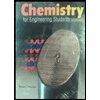 Chemistry for Engineering StudentsChemistryISBN:9781337398909Author:Lawrence S. Brown, Tom HolmePublisher:Cengage Learning
Chemistry for Engineering StudentsChemistryISBN:9781337398909Author:Lawrence S. Brown, Tom HolmePublisher:Cengage Learning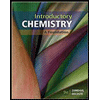 Introductory Chemistry: A FoundationChemistryISBN:9781337399425Author:Steven S. Zumdahl, Donald J. DeCostePublisher:Cengage Learning
Introductory Chemistry: A FoundationChemistryISBN:9781337399425Author:Steven S. Zumdahl, Donald J. DeCostePublisher:Cengage Learning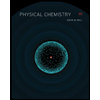 Physical ChemistryChemistryISBN:9781133958437Author:Ball, David W. (david Warren), BAER, TomasPublisher:Wadsworth Cengage Learning,
Physical ChemistryChemistryISBN:9781133958437Author:Ball, David W. (david Warren), BAER, TomasPublisher:Wadsworth Cengage Learning, Chemistry: Principles and ReactionsChemistryISBN:9781305079373Author:William L. Masterton, Cecile N. HurleyPublisher:Cengage Learning
Chemistry: Principles and ReactionsChemistryISBN:9781305079373Author:William L. Masterton, Cecile N. HurleyPublisher:Cengage Learning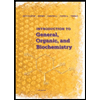 Introduction to General, Organic and BiochemistryChemistryISBN:9781285869759Author:Frederick A. Bettelheim, William H. Brown, Mary K. Campbell, Shawn O. Farrell, Omar TorresPublisher:Cengage LearningChemistry: Matter and ChangeChemistryISBN:9780078746376Author:Dinah Zike, Laurel Dingrando, Nicholas Hainen, Cheryl WistromPublisher:Glencoe/McGraw-Hill School Pub Co
Introduction to General, Organic and BiochemistryChemistryISBN:9781285869759Author:Frederick A. Bettelheim, William H. Brown, Mary K. Campbell, Shawn O. Farrell, Omar TorresPublisher:Cengage LearningChemistry: Matter and ChangeChemistryISBN:9780078746376Author:Dinah Zike, Laurel Dingrando, Nicholas Hainen, Cheryl WistromPublisher:Glencoe/McGraw-Hill School Pub Co

Chemistry for Engineering Students
Chemistry
ISBN:9781337398909
Author:Lawrence S. Brown, Tom Holme
Publisher:Cengage Learning

Introductory Chemistry: A Foundation
Chemistry
ISBN:9781337399425
Author:Steven S. Zumdahl, Donald J. DeCoste
Publisher:Cengage Learning

Physical Chemistry
Chemistry
ISBN:9781133958437
Author:Ball, David W. (david Warren), BAER, Tomas
Publisher:Wadsworth Cengage Learning,

Chemistry: Principles and Reactions
Chemistry
ISBN:9781305079373
Author:William L. Masterton, Cecile N. Hurley
Publisher:Cengage Learning

Introduction to General, Organic and Biochemistry
Chemistry
ISBN:9781285869759
Author:Frederick A. Bettelheim, William H. Brown, Mary K. Campbell, Shawn O. Farrell, Omar Torres
Publisher:Cengage Learning

Chemistry: Matter and Change
Chemistry
ISBN:9780078746376
Author:Dinah Zike, Laurel Dingrando, Nicholas Hainen, Cheryl Wistrom
Publisher:Glencoe/McGraw-Hill School Pub Co